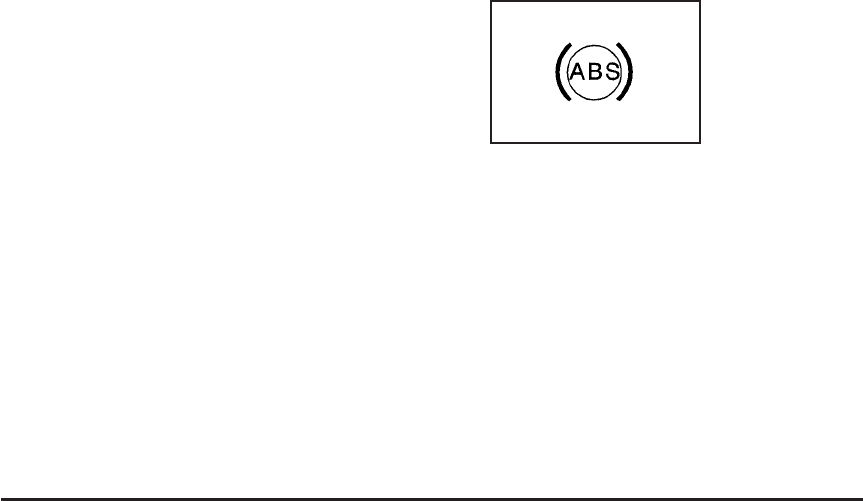
Avoid needless heavy braking. Some people
drive in spurts — heavy acceleration followed
by heavy braking — rather than keeping pace
with traffic. This is a mistake. The brakes may
not have time to cool between hard stops.
The brakes will wear out much faster if you do a
lot of heavy braking. If you keep pace with
the traffic and allow realistic following distances,
you will eliminate a lot of unnecessary braking.
That means better braking and longer brake life.
If your vehicle’s engine ever stops while you
are driving, brake normally but do not pump the
brakes. If you do, the pedal may get harder
to push down. If the engine stops, you will still
have some power brake assist. But you will use it
when you brake. Once the power assist is
used up, it may take longer to stop and the brake
pedal will be harder to push.
Adding non-GM accessories can affect your
vehicle’s performance. See Accessories and
Modifications on page 264.
Anti-Lock Brake System (ABS)
Your vehicle may have the Anti-Lock Brake
System (ABS), an advanced electronic braking
system that will help prevent a braking skid.
If your vehicle has ABS,
this warning light will
come on briefly when
you start your vehicle.
The warning light is on the instrument panel
cluster for a sedan. See Anti-Lock Brake System
Warning Light on page 180. For hatchback
models, the warning light is on the Secondary
Information Center (SIC). See Anti-Lock Brake
System Warning Light on page 180.
225


















